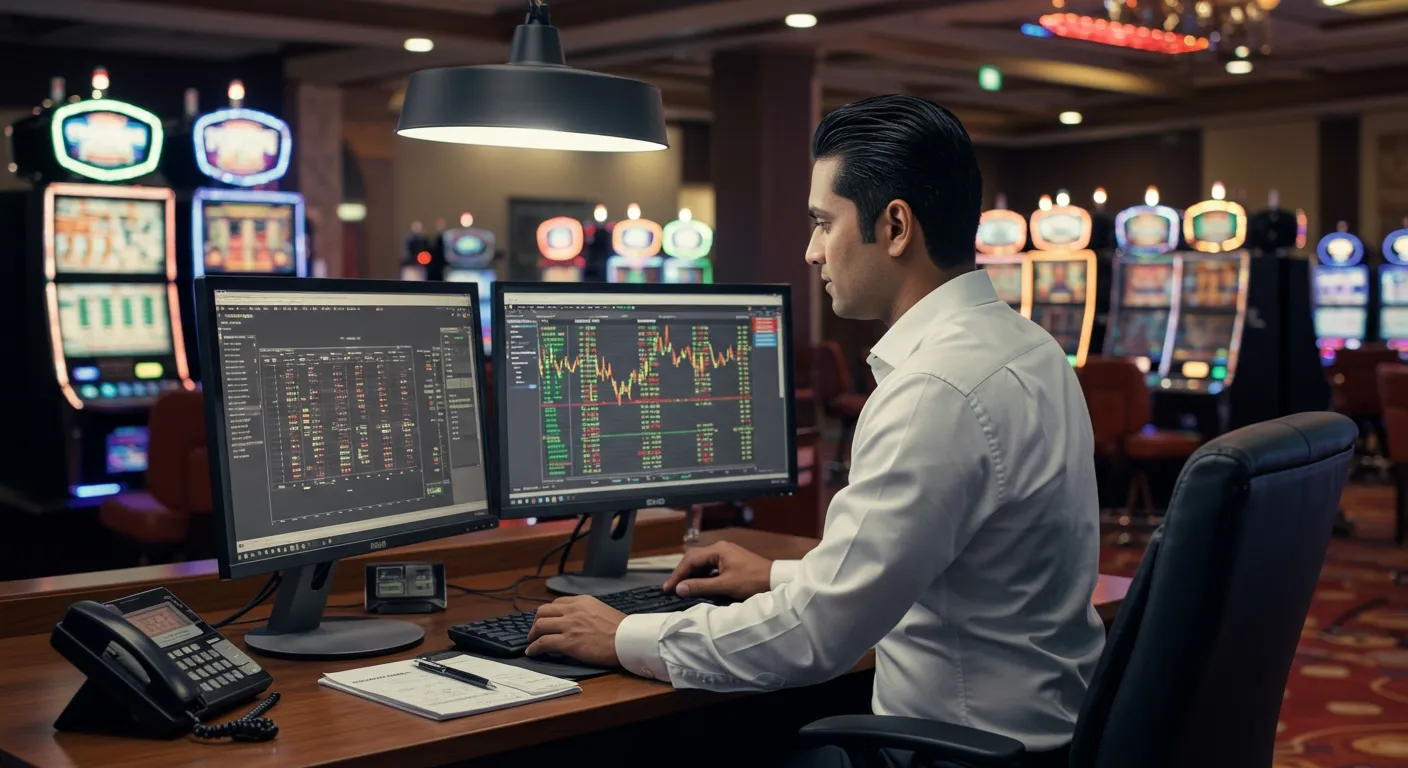Whenever you place a bet—whether it’s on football, horse racing, or esports—the odds staring back at you aren’t random numbers. They’re the product of meticulous data analysis, probability modelling, and market behavior. Bookmakers don’t just predict outcomes; they calculate risk and profit margins in a way that ensures they stay ahead in the long run.
Understanding how bookmakers set their betting odds is key to becoming a smarter bettor. It helps you read between the lines, recognize value bets, and make decisions based not only on emotion but also on mathematics. Let’s dive into how it all works behind the scenes.
The Core Concept of Betting Odds
At their simplest, betting odds represent the probability of a particular outcome happening. The lower the odds, the more likely the event is perceived to be—and the smaller your potential profit. Conversely, longer odds imply a less likely outcome but a bigger potential reward.
For example, if a football team is given odds of 2.00 (or “evens”), it means the bookmaker estimates the team has roughly a 50% chance of winning. If you bet £10 and they win, you get £20 in total (your stake plus profit). But the true trick lies in how bookmakers calculate those probabilities—and how they adjust them to maintain profit.
Bookmakers use a mathematical concept known as “implied probability”. It converts odds into a percentage chance of an event occurring. But here’s where the magic happens: bookmakers build in a margin, often called the “overround,” to guarantee themselves profit no matter the outcome.
How Bookmakers Turn Probability into Profit
Let’s imagine a tennis match where Player A and Player B both have a 50% chance of winning. In a perfectly fair world, each would have odds of 2.00. But bookmakers aren’t in the business of fairness—they’re in the business of making money. So they might offer odds of 1.91 on each player instead.
This subtle adjustment means that the combined implied probabilities (1/1.91 + 1/1.91) equal 104.7%, not 100%. That extra 4.7% is the bookmaker’s built-in profit margin. Regardless of who wins, that margin ensures the bookmaker keeps a slice of the action.
Now multiply this model by thousands of events daily, and you begin to understand why bookmakers rarely lose overall. Their edge isn’t in predicting who will win—it’s in managing the odds so that no matter what happens, they maintain long-term profitability.
The Influence of Market Forces and Data Models
Modern bookmakers no longer rely solely on human intuition. They employ massive datasets, real-time analytics, and algorithmic models. These systems take into account everything from player injuries and team form to weather forecasts and historical performance data.
In markets like uk betting sites, technology plays a particularly huge role. Odds are constantly updated using automated software that monitors market movement across multiple sportsbooks. If one major bookmaker changes its odds for a Premier League match, others often follow within minutes to stay competitive and avoid risk exposure.
However, data alone doesn’t drive every decision. Traders—professionals who specialize in odds setting—still play a vital part. They interpret contextual factors that machines might miss: psychological pressure, tactical shifts, or even subtle motivation changes within teams. This mix of technology and human expertise creates odds that are as accurate and balanced as possible.
Adjusting Odds Based on Betting Behavior
Once the odds are released, the market begins to move. Bettors place wagers, and bookmakers monitor where the money is going. If too many bets come in on one side, the odds will shift to balance liability.
For instance, if heavy betting starts on Team A to win, the bookmaker may shorten their odds from 2.00 to 1.80 while lengthening Team B’s odds from 2.00 to 2.20. This adjustment encourages more bets on the less popular outcome, reducing the bookmaker’s potential loss if Team A does win.
This dynamic system is similar to the stock market: odds represent price, and every bet influences supply and demand. Bookmakers thrive by maintaining equilibrium—ensuring that no single outcome would cause a massive financial hit.
The Role of Statistical Modelling
Behind the odds you see lies a world of predictive mathematics. Bookmakers use statistical models that process hundreds of variables to estimate probabilities more accurately than any individual bettor could. These models are based on Monte Carlo simulations, regression analysis, and machine learning algorithms.
For example, when pricing odds for a football match, a bookmaker’s model might include data such as:
- Average goals per match for each team
- Possession and shooting accuracy
- Home vs. away performance
- Weather and pitch conditions
- Player injuries and suspensions
- Head-to-head records
By simulating thousands of potential outcomes, the model produces a probability distribution for each result—win, draw, or loss. The bookmaker then adds its margin to create the final odds you see on the site.
The process is incredibly refined. A difference as small as 0.5% in probability can change odds significantly, and that tiny margin often determines whether a bookmaker earns or loses money on a particular market.
Why Odds Differ Between Bookmakers
Have you ever compared two different sportsbooks and noticed that one offers slightly higher odds for the same event? That’s not a mistake—it’s strategy. Bookmakers each have their own risk appetite, data models, and customer bases.
One bookmaker might be heavily exposed to bets on Manchester United, while another sees more activity on Arsenal. To balance their books, each adjusts odds differently. Over time, this leads to market variation—something savvy bettors exploit through “value betting” or “arbitrage betting.”
Bookmakers also use differential pricing to attract specific demographics. For example, a UK-focused operator might offer better odds on local football matches to appeal to domestic fans, while international platforms might prioritize tennis or cricket markets.
The Human Element: Psychology and Perception
Setting odds isn’t purely about math—it’s also about psychology. Bookmakers understand that bettors are emotional creatures. They know the average player tends to overvalue favorites and underestimate underdogs.
For example, most casual fans bet on popular teams like Liverpool or Real Madrid, even when the odds don’t offer real value. Bookmakers adjust for this bias by slightly lowering odds on these teams, effectively taking advantage of predictable betting behavior. This ensures that even when the crowd bets irrationally, the bookmaker still profits.
It’s a fascinating interplay between logic and emotion. Bookmakers rely on data to forecast probabilities, but they also rely on human psychology to predict where the money will flow.
How You Can Use This Knowledge to Your Advantage
Understanding how bookmakers set their odds gives you a unique edge as a bettor. Once you realize that odds reflect both probability and market behavior, you start thinking differently.
Instead of betting based on team loyalty or gut feeling, you can look for value bets—instances where the bookmaker’s odds underestimate the true probability of an outcome. For example, if your research shows that a team has a 60% chance of winning but the odds imply only 50%, that’s value. Over time, consistently identifying such opportunities can lead to profitability, even in a market designed to favor the house.
But keep in mind that bookmakers have decades of experience and advanced systems working in their favor. Your goal shouldn’t be to beat them at their own game every time—but to make smarter, more informed decisions that minimize losses and maximize long-term gains.
The Future of Odds Setting
With the rise of AI, machine learning, and real-time data tracking, the world of sports betting is becoming even more sophisticated. Some bookmakers now use neural networks that analyze millions of data points per second, adjusting odds dynamically during live events.
In-play betting, where odds shift minute by minute, relies heavily on automation. Bookmakers can instantly recalculate probabilities after a goal, a red card, or a change in possession. The future of odds setting lies in this blend of automation, artificial intelligence, and psychological understanding.
Yet, even as technology advances, the bookmaker’s goal remains the same: balance the books, manage risk, and ensure profitability.
Final Thoughts
Bookmakers are not in the business of predicting winners—they’re in the business of managing probabilities and psychology. The odds you see are a blend of mathematics, market movement, and emotional forecasting. They ensure that no matter the result, the bookmaker stays in control.
By understanding how odds are set, you don’t just see numbers on a screen—you see strategy, logic, and intent. Whether you’re betting on football, tennis, or horse racing, remember: every odd tells a story, and the more you understand that story, the smarter your bets become.




